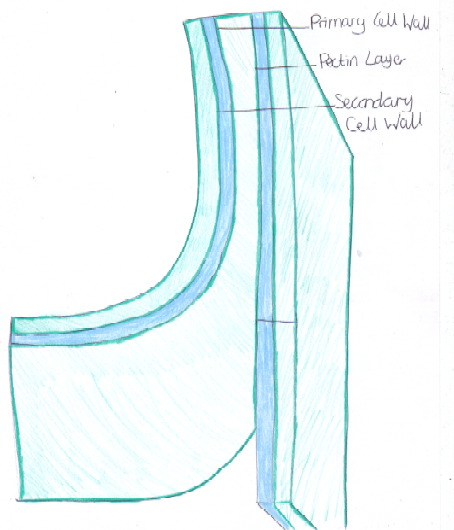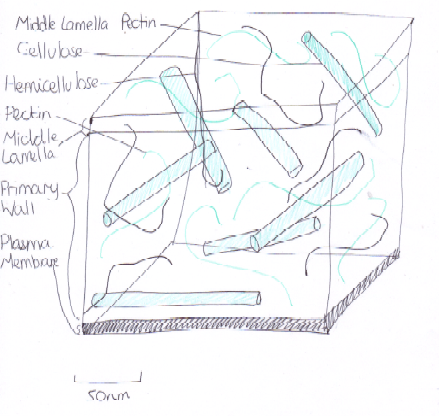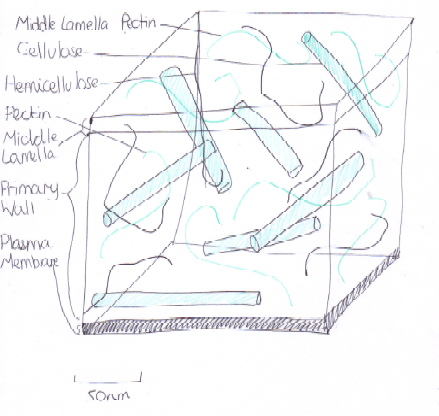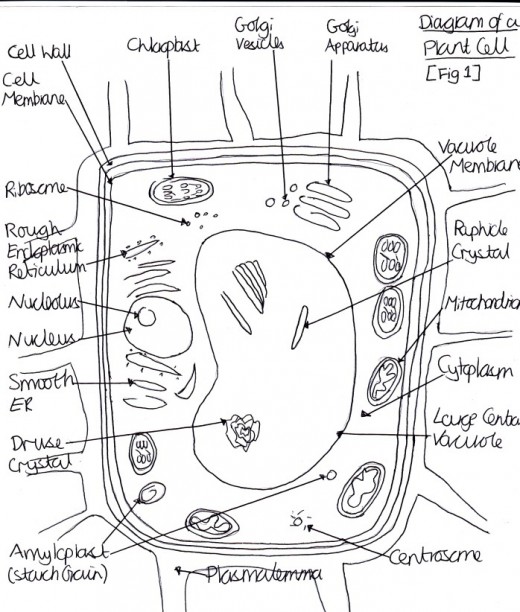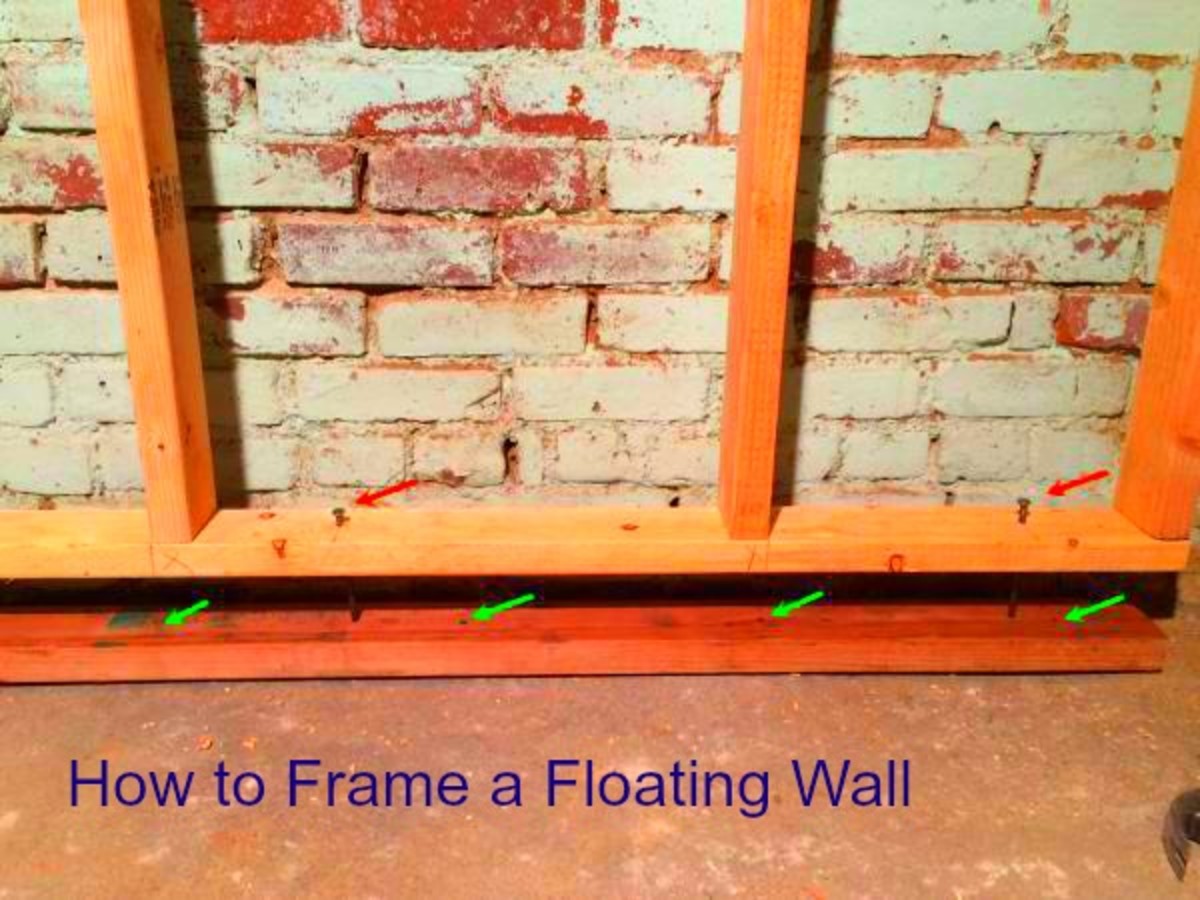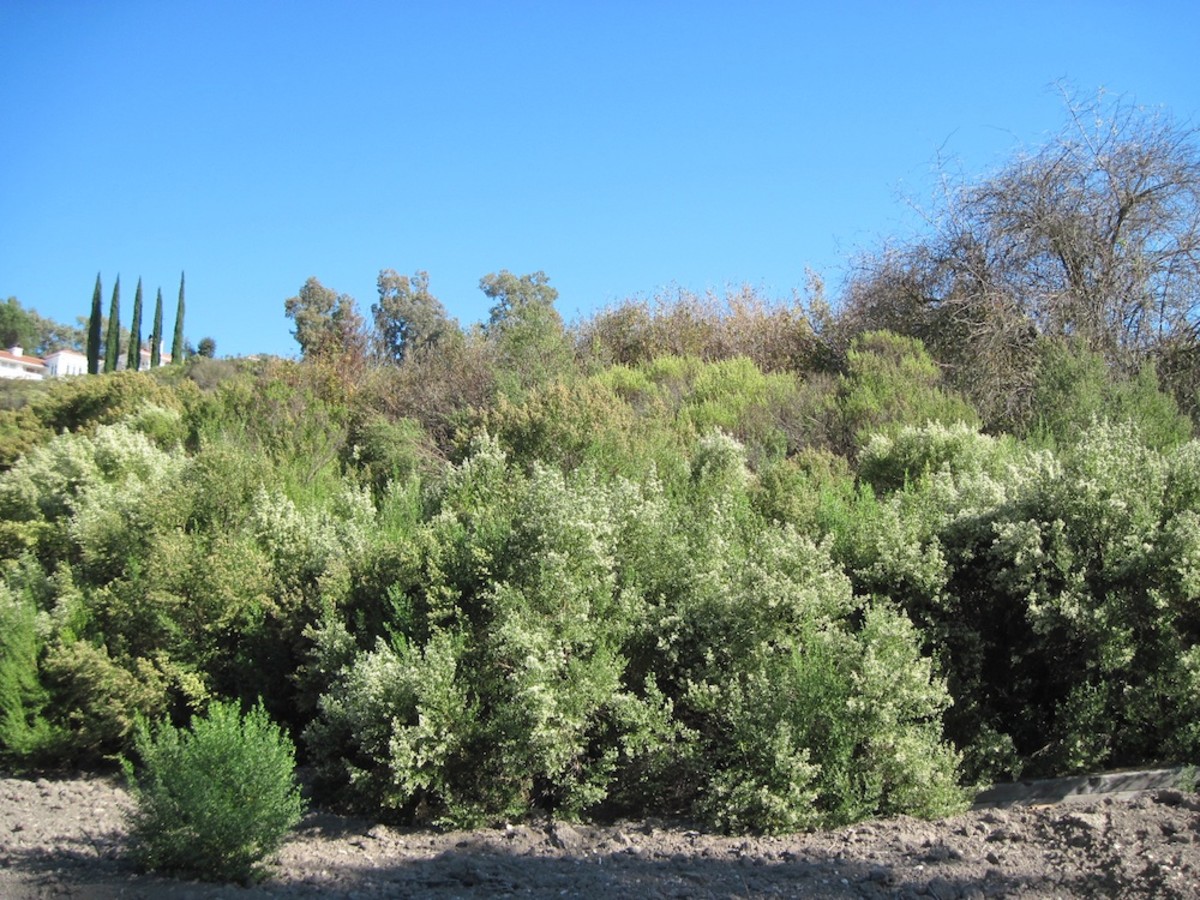The Structure, Function and Usefulness (to Humans) of Plant Cell Walls
Figure 5 Cell Wall Layers
Click thumbnail to view full-size
Figure 6 Components of the Cell Wall
Click thumbnail to view full-size

The Structure of Plant Cell Walls
The plant cell wall consists of three layers, as shown by figure five.
Middle Lamella
The first layer is that of the middle lamella [Figure six]. It is composed of pectic compounds, pectic acid and protein. The middle lamella makes up the outer wall of the cell and is shared by adjacent cells.
Pectic acid is a polymer of roughly one hundred galacturonic acid molecules. It is very hydrophilic and soluble as well as being able to easily form bridges with Ca++ and Mg++ of insoluble gels.
Pectin is a polymer of roughly two hundred galacturonic acid molecules. It is often found with acidic sugars, for example galactose and arabinose. Although pectin is less hydrated then pectic acid, it is the most soluble cell wall polysaccharide and can be extracted with hot water (Alberts, 2002).
Primary Cell Wall
Another layer is that of the primary cell walls, which normally develops between two daughter cells in early telophase [Figure six]. They are composed of a rigid skeleton of cellulose microfibrils, embedded in a gel-like matrix of pectic compounds (e.g. pectic acid), hemicellulose and glycoproteins (Scheller et al., 2010).
Cellulose is a linear chain of one thousand to ten thousand beta D covalently bonded glucose residues (Strnad, 2000). It is the key component of primary (with six thousand glucose units) and secondary cell walls (with thirteen-sixteen thousand units) and is, according to Matthews et al. (1999), “one of the most abundant organic compounds in the biosphere”. These chains combine to form microfibrils with a crystalline structure. Zaikov (2004) stated that “it is the H-bonding that forms the basis for the high tensile strength of cellulose”.
Hemicellulose is a group of polysaccharides with short highly-branched chains of sugar which are tightly bound to the cell wall, e.g. xylans and xyloglucans (Zaikov, 2004).
Scheller et al. (2010), describes the function of hemicellulose to be “their contribution to strengthening the cell wall by interaction with cellulose and, in some walls, with lignin”.
Secondary Cell Wall
There are also the secondary cell walls that develop through the progressive deposition of cellulose fibrils, after cell enlargement is finished [Figure five]. They are very rigid and often layered. They are composed of cellulose, hemicellulose and lignin (Scheller et al., 2010).
Lignin is a complex mixture of different types of phenyl propane units which is often highly branched. It is the basic unit of xylem and wood, since it forms a stable network that gives the cell tension-proof flexibility (through covalent bonding) (Lybeer, 2006).
Figure 2 Diagram of a Plant Cell
Click thumbnail to view full-size
The Function of Plant Cell Walls
The functions of the cell wall are: to lead the cells stability, determine its shape, influence its development, counterbalance the osmotic pressure and protect the cell against pathogens.
Cell Stability
Plant cell walls are important for providing mechanical tensile strength for the cell. Scheller et al. (2010), says hemicellulose is not the only reason for this stability but it is also due to lignin. Lignin was one of the prerequisites of the evolution of large upright growing terrestrial plants, because it works as a ‘backbone’ (Lybeer, 2006). However, it is not the presence of these molecules that cause the rigidity but it is the effect of hydraulic turgor pressure, which is why plants wilt when they have a reduction in water.
Shape Determination and its Influence of Development
The cell wall controls the rate and direction of cell growth, which eventually controls the plant’s morphology (morphogenesis). For example, in comparison to animal cells, the cells of plants are of a regular size and shape (animal cells vary greatly) [Figure two]. The process is that cells control the orientation of microfibril deposits in the cell wall, which alters the direction of expansion due to turgor pressure (Alberts et al, 2002).
Counterbalancing Osmotic Pressure
Plant cell walls prevent the over-expansion of the cell, which stops the cell membrane bursting in a hypotonic medium (osmotic lysis). Although it could be said the plant cell wall acts as a barrier to water in suberized cells and as a barrier to large molecules (which could be toxic) from entering the cell, it must also allow the passage of water (and ions) to and from the cell to ensure the plant cell continues to live. However, in some cells e.g. those that have been lignified, this is no longer the case and the cell dies, but it still helps with the cell by providing strength (Alberts, 2002).
Protection from Pathogen
The cell wall is able to act as a physical barrier to pathogens to prevent them from harming the plant so they can obtain the nutrients within. Underwood (2012) described this as “the cell wall is actively remodelled and reinforced specifically at discrete sites of interaction with potentially pathogenic microbes”. Underwood is referring to the reinforcement of the cell wall done by papillae (cell wall appositions), which is done as soon as the plant identifies possibly harmful bacteria or fungi (Underwood, 2012).
The Usefulness of Plant Cell Walls to Humans
Plant cell walls are useful for food production, clothing, paper, fuel and medicine in humans.
The components of the cell walls are useful for human health, both as medication and as a vital part of our diets. Pectin from cell walls is a soluble dietary fibre that binds to cholesterol to slow down glucose absorption in humans. It also reduces blood cholesterol because short-chain fatty acids are used up to break down the pectin. Cellulose and hemicellulose are also important as dietary fibre because the human digestive system cannot break them down, since it is lacking in cellulase (UXL Encyclopaedia of Science, 2002). Pharmaceutical applications of lignin include the purification of antiseptic and antibiotic drug because it can be used to remove hemo- and entero- toxins and lipid-soluble metabolites (Meike, 2012). Cellulose applications include: oxidation, microbial cellulose synthesis, incorporation of metallic nanoparticles, and for coating quaternary ammonium compounds (Strnad, 2000).
Cell wall molecules are also important in manufacture. The fibres of cellulose (and sometimes a little lignin) are twisted and woven to make cotton, hemp, flax and jute (UXL Encyclopaedia of Science, 2002). Cotton is a soft fluffy cellulose fibre that makes soft breathable textile e.g. towels, jeans (Strnad, 2000). Jute is a lingo-cellulosic fibre which is used for making hard-wearing cloth e.g. curtains, sacks. Also, paper is manufactured from cellulose, when it is reduced to a pulp, which is then washed, bleached, dried, pressed and smoothed. After the water has been sieved off, the remaining pulp is pressed, and then allowed to dry to yield a very thin sheet of paper. All plants are able to be used however, the most frequently used today are the more fast-growing varieties e.g. pine (UXL Encyclopaedia of Science, 2002).
Heavily lignified woods are used for fuel, since they burn more efficiently (The Forestry Commission, 2012). Pauly et al. (2007), describes plant cell walls as being “the most abundant renewable resource on this planet”. This is because they can be efficiently degraded into fermentable sugars. However, this is research in-progress and does not yet occur because the polysaccharide biosynthetic machinery would have to be altered first.
References
Alberts, B. et al. (2002), Molecular Biology of the Cell [4th edition], Garland Science.
Boerjan, W. (2010), ‘Initial Field Test Results GM Poplars: Bioethanol Yield Almost Doubled’ [online journal], Available at http://www.vib.be/en/news/Pages/Initial-field-test-results-GM-poplars-bioethanol-yield-almost-doubled.aspx, (Accessed: 24/11/12).
Cossalter, C. et al. (2003), Fast-Wood Forestry: Myths and Realities, Indonesia Printer, Available at http://www.cifor.org/publications/pdf_files/Books/ForestPerspective.pdf, (Accessed: 24/11/12).
‘Frontier in Plant Physiology’ (page 1) [online journal], Available at http://www.frontiersin.org/Plant_Physiology/10.3389/fpls.2012.00085/abstract, (Accessed: 24/11/12).
Guardian, ‘The GM Tree Plantation Bred to Satisfy the World’s Energy Needs’, Available at http://environment/2012/nov/15/gm-trees-bred-world-energy, (Accessed: 24/11/12).
Lybeer, B. (2006), ‘Lignification and Cell Wall Thickening in Nodes of Phyllostachys viridiglaucescens and Phyllostachys nigra’, Annuals of Botany, Volume 97 (pages 529-539), [online journal], Available at http://aob.oxfordjournals.org/content/97/4/529.full.pdf, (Accessed: 20/11/12).
Matthews, C. et al. (1999), Biochemistry, [3rd edition], Benjamin Cummings.
Meike (2012), ‘Inexpensive, Environmentally Friendly and High Permeable Lignin-Based Ion Exchangers’, Industrial Partnership Office, Available at https://ipo.llnl.gov/?q=technologies-lignin_based_ion_exchangers, (Accessed: 24/11/12).
Pauly et al. (2007), ‘Cell Wall Carbohydrates and their Modification as a Resource
for Biofuels’, The Plant Journal, Volume 54 (page 1) [online journal], Available at http://public.wsu.edu/~lange-m/Documnets/Teaching2011/Pauly2008.pdf, (Accessed: 24/11/12).
Pollack, A. (2007), ‘Through Genetics, Tapping a Tree’s Potential as a Source of Energy’, The New York Times, Available at http://www.nytimes.com/2007/11/20/science/20tree.html?pagewanted=all, (Accessed: 24/11/12).
Scheller H., Ulvskov, P. (2010), ‘Hemicelluloses, Annual Review of Plant Biology’, Volume 61 (page 1), [online journal], Available at http://www.annualreviews.org/doi/abs/10.1146/annurev-arplant-042809-112315, (Accessed: 22/11/12).
Strnad (2000), ‘Cellulose Fibres Functionalised by Chitosan: Characterization and Application’ [online journal], Available at http://cdn.intechopen.com/pdfs/12146/InTech-Cellulose_fibres_funcionalised_by_chitosan_characterization_and_application.pdf, (Accessed: 24/11/12).
The Forestry Commission (2012), ‘Replace Other Materials with Wood’, Available at http://www.forestry.gov.uk/forestry/INFD-7M8MXV, (Accessed: 22/11/12).
Underwood, W. (2012), The Plant Cell Wall: A Dynamic Barrier Against Pathogen Invasion, UXL Encyclopaedia of Science (2002), (Second edition), The Gale Group Inc.
Vidal, J. (2012), The GM Tree Plantations Bred to Satisfy the World's Energy Needs.
Zaikov, G. et al. (2004), Polymer Analysis, Degradation and Stabilization (Pages 97-100), Nova Science Publishers Inc.

